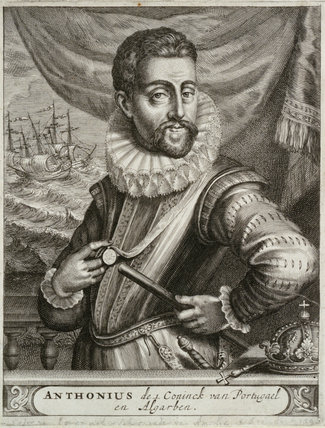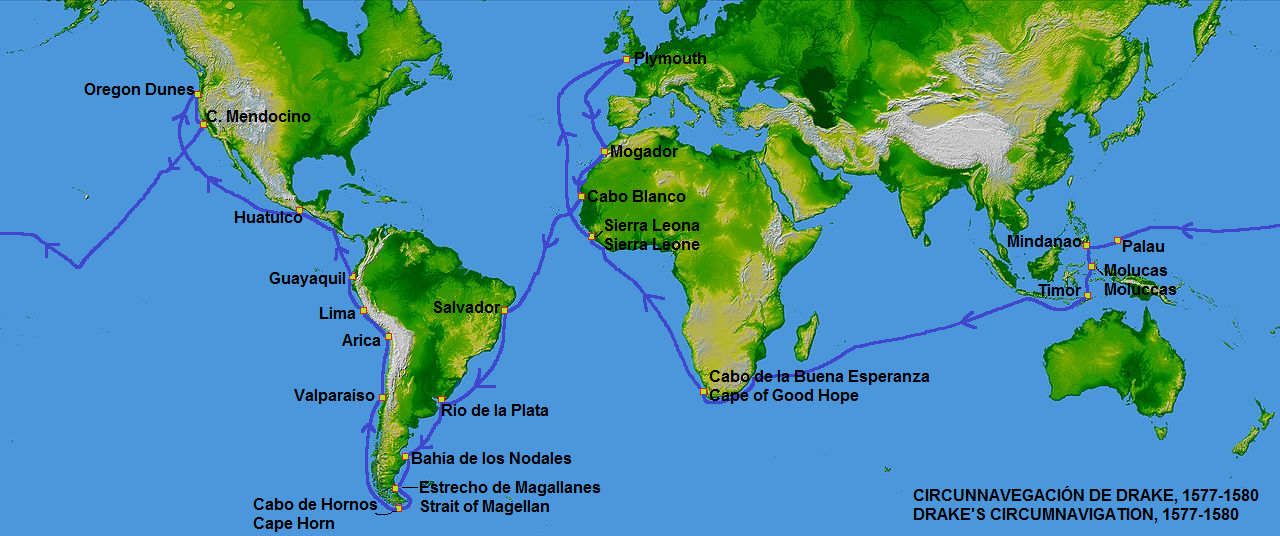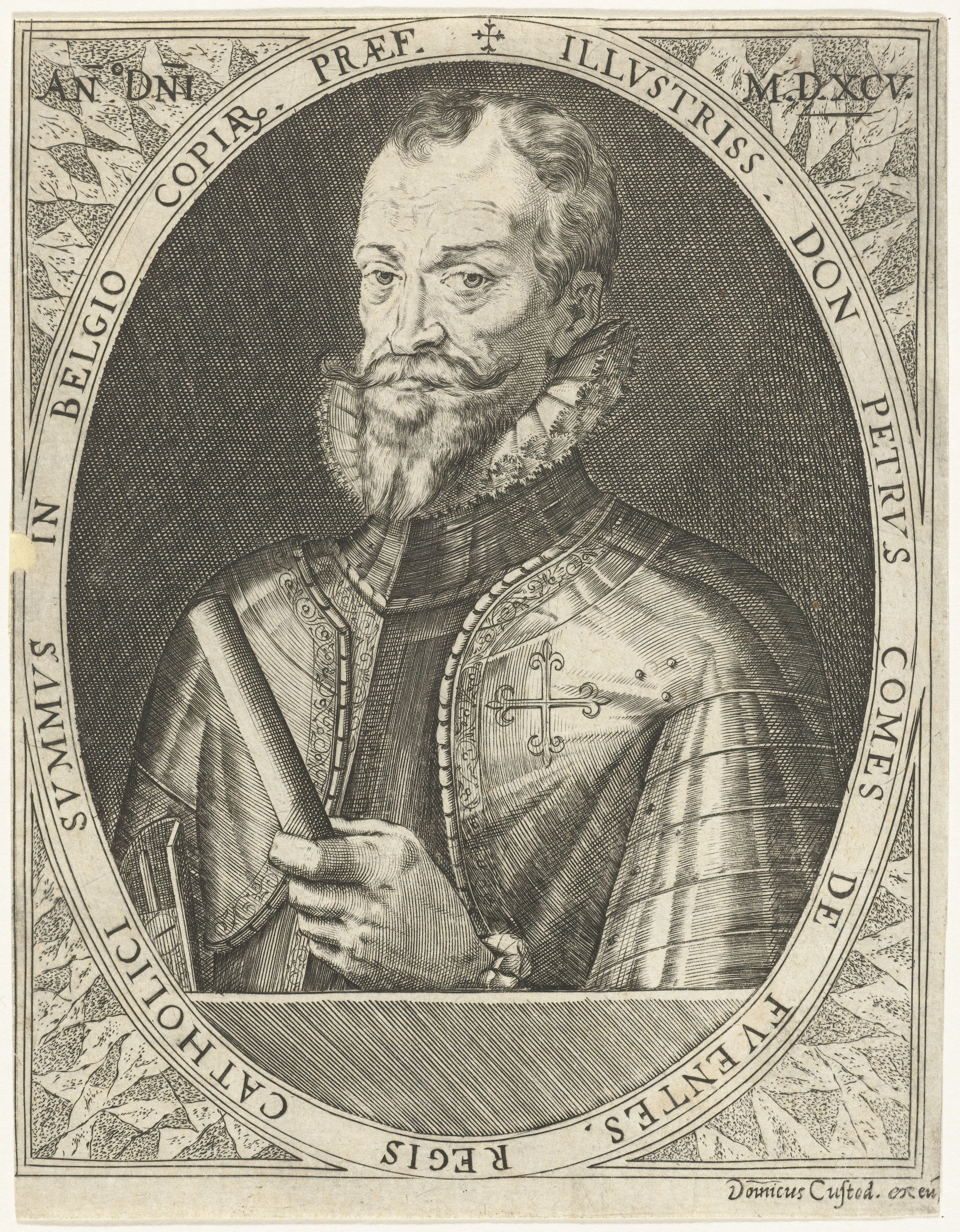|
English Armada
The English Armada ( es, Invencible Inglesa, lit=English Invincible), also known as the Counter Armada or the Drake–Norris Expedition, was an attack fleet sent against Spain by Queen Elizabeth I of England that sailed on 28 April 1589 during the undeclared Anglo-Spanish War (1585–1604) and the Eighty Years' War. Led by Sir Francis Drake as admiral and Sir John Norris as general, it failed to drive home the advantage that England had gained resulting from the failure of the Spanish Armada in the previous year. The Spanish victory marked a revival of Philip II's naval power through the next decade. Background After the failure of the Spanish Armada, England's Queen Elizabeth I's intentions were to capitalize upon Spain's temporary weakness at sea and to compel King Philip II of Spain to negotiate for peace. Her advisors had more ambitious plans. William Cecil, 1st Baron Burghley noted that the expedition had three main objectives: destroy the battered Spanish Atlantic fle ... [...More Info...] [...Related Items...] OR: [Wikipedia] [Google] [Baidu] |
Anglo-Spanish War (1585)
Anglo-Spanish War may refer to: * Anglo-Spanish War (1585–1604), including the Spanish Armada and the English Armada * Anglo-Spanish War (1625–1630), part of the Thirty Years' War * Anglo-Spanish War (1654–1660), part of the Franco-Spanish War * Portuguese Restoration War (1662–1668), English support for Portugal * War of the Spanish Succession (1701–1713), British support to Archduke Charles * War of the Quadruple Alliance (1718–1720) * Anglo-Spanish War (1727–1729) (1727–1729) * War of Jenkins' Ear (1739-1748), later merged into the War of the Austrian Succession * Anglo-Spanish War (1762–1763), part of the Seven Years' War * Anglo-Spanish War (1779–1783), linked to the American Revolutionary War * Anglo-Spanish War (1796–1808), part of the French Revolutionary and Napoleonic Wars * The Spanish American wars of independence (1815–1832), British supporting role to the Decolonization of the Americas * First Carlist War (1833–1840), British support to Q ... [...More Info...] [...Related Items...] OR: [Wikipedia] [Google] [Baidu] |
Francis Drake
Sir Francis Drake ( – 28 January 1596) was an English explorer, sea captain, privateer, slave trader, naval officer, and politician. Drake is best known for his circumnavigation of the world in a single expedition, from 1577 to 1580 (the first English circumnavigation, the second carried out in a single expedition, and third circumnavigation overall). This included his incursion into the Pacific Ocean, until then an area of exclusive Spanish interest, and his claim to New Albion for England, an area in what is now the U.S. state of California. His expedition inaugurated an era of conflict with the Spanish on the western coast of the Americas, an area that had previously been largely unexplored by Western shipping. He was Member of Parliament (MP) for three constituencies; Camelford in 1581, Bossiney in 1584, and Plymouth in 1593. Queen Elizabeth I of England, Elizabeth I awarded Drake a knighthood in 1581 which he received on the ''Golden Hind'' in Deptford. In the same ... [...More Info...] [...Related Items...] OR: [Wikipedia] [Google] [Baidu] |
Spanish Armada
The Spanish Armada (a.k.a. the Enterprise of England, es, Grande y Felicísima Armada, links=no, lit=Great and Most Fortunate Navy) was a Spanish fleet that sailed from Lisbon in late May 1588, commanded by the Duke of Medina Sidonia, an aristocrat without previous naval experience appointed by Philip II of Spain. His orders were to sail up the English Channel, link up with the Duke of Parma in Flanders, and escort an invasion force that would land in England and overthrow Elizabeth I. Its purpose was to reinstate Catholicism in England, end support for the Dutch Republic, and prevent attacks by English and Dutch privateers against Spanish interests in the Americas. The Spanish were opposed by an English fleet based in Plymouth. Faster and more manoeuvrable than the larger Spanish galleons, they were able to attack the Armada as it sailed up the Channel. Several subordinates advised Medina Sidonia to anchor in The Solent and occupy the Isle of Wight, but he refused to devia ... [...More Info...] [...Related Items...] OR: [Wikipedia] [Google] [Baidu] |
Sir Francis Drake
Sir Francis Drake ( – 28 January 1596) was an English explorer, sea captain, privateer, slave trader, naval officer, and politician. Drake is best known for his circumnavigation of the world in a single expedition, from 1577 to 1580 (the first English circumnavigation, the second carried out in a single expedition, and third circumnavigation overall). This included his incursion into the Pacific Ocean, until then an area of exclusive Spanish interest, and his claim to New Albion for England, an area in what is now the U.S. state of California. His expedition inaugurated an era of conflict with the Spanish on the western coast of the Americas, an area that had previously been largely unexplored by Western shipping. He was Member of Parliament (MP) for three constituencies; Camelford in 1581, Bossiney in 1584, and Plymouth in 1593. Elizabeth I awarded Drake a knighthood in 1581 which he received on the ''Golden Hind'' in Deptford. In the same year, he was appointed mayor ... [...More Info...] [...Related Items...] OR: [Wikipedia] [Google] [Baidu] |
Eighty Years' War
The Eighty Years' War or Dutch Revolt ( nl, Nederlandse Opstand) ( c.1566/1568–1648) was an armed conflict in the Habsburg Netherlands between disparate groups of rebels and the Spanish government. The causes of the war included the Reformation, centralisation, taxation, and the rights and privileges of the nobility and cities. After the initial stages, Philip II of Spain, the sovereign of the Netherlands, deployed his armies and regained control over most of the rebel-held territories. However, widespread mutinies in the Spanish army caused a general uprising. Under the leadership of the exiled William the Silent, the Catholic- and Protestant-dominated provinces sought to establish religious peace while jointly opposing the king's regime with the Pacification of Ghent, but the general rebellion failed to sustain itself. Despite Governor of Spanish Netherlands and General for Spain, the Duke of Parma's steady military and diplomatic successes, the Union of Utrecht ... [...More Info...] [...Related Items...] OR: [Wikipedia] [Google] [Baidu] |
Anglo-Spanish War (1585–1604)
The Anglo-Spanish War (1585–1604) was an intermittent conflict between the Habsburg Kingdom of Spain and the Kingdom of England. It was never formally declared. The war included much English privateering against Spanish ships, and several widely separated battles. It began with England's military expedition in 1585 to what was then the Spanish Netherlands under the command of the Earl of Leicester, in support of the Dutch rebellion against Spanish Habsburg rule. The English enjoyed a victory at Cádiz in 1587, and repelled the Spanish Armada in 1588, but then suffered heavy setbacks: the English Armada (1589), the Drake–Hawkins expedition (1595), and the Essex–Raleigh expedition (1597). Three further Spanish armadas were sent against England and Ireland in 1596, 1597, and 1601, but these likewise ended in failure for Spain, mainly because of adverse weather. The war became deadlocked around the turn of the 17th century during campaigns in the Netherlands, France, a ... [...More Info...] [...Related Items...] OR: [Wikipedia] [Google] [Baidu] |
Galleons
Galleons were large, multi-decked sailing ships first used as armed cargo carriers by European states from the 16th to 18th centuries during the age of sail and were the principal vessels drafted for use as warships until the Anglo-Dutch Wars of the mid-1600s. Galleons generally carried three or more masts with a lateen fore-and-aft rig on the rear masts, were carvel built with a prominent squared off raised stern, and used square-rigged sail plans on their fore-mast and main-masts. Such ships were the mainstay of maritime commerce into the early 19th century, and were often drafted into use as auxiliary naval war vessels—indeed, were the mainstay of contending fleets through most of the 150 years of the Age of Exploration—before the Anglo-Dutch wars brought purpose-built ship-rigged warships, ships of the line, that thereafter dominated war at sea during the remainder of the age of sail. Etymology The word ''galleon'' 'large ship' comes from Old French ''galion'' 'a ... [...More Info...] [...Related Items...] OR: [Wikipedia] [Google] [Baidu] |
Teodósio II, Duke Of Braganza
Teodósio II, 7th Duke of Braganza (28 April 1568 – 29 November 1630) was a Portuguese nobleman and father of João IV of Portugal. He is known for his allegiance to King Philip I of Portugal. Biography As a child, Teodósio was brought to the court and made page to the king Sebastian I of Portugal. The king was very fond of him and in 1578 insisted on taking him to Africa in the expedition against the king of Morocco. This military campaign was doomed. During the ill-fated battle of Alcácer Quibir, Teodósio remained at the side of his king until the situation become extremely dangerous. Then, Sebastian ordered servants to take the ten-year-old child to safety behind the lines. The young man was not happy to be set aside and ran away at the first opportunity. Teodósio mounted a horse and went to the front lines of the battle, pursued by very scared servants. Eventually, like many others, he was wounded and taken prisoner. Back in Portugal, his father João went mad with grief ... [...More Info...] [...Related Items...] OR: [Wikipedia] [Google] [Baidu] |
Alonso De Bazán
Alonso de Bazán, son of Admiral Álvaro de Bazán the Elder, Marquis del Viso, and brother of the better known Admiral Álvaro de Bazán, 1st Marquis of Santa Cruz, was a Spanish naval commander during the Anglo–Spanish War (1585–1604) and the Eighty Years' War. Notable military actions In 1588, he should have been part of a second fleet and give support to the Spanish Armada that was trying to invade England. After the failure of that fleet, he transported infantry troops to La Coruña and Lisbon, in preparation of an incoming English counter-offensive. In 1589, after the failure of the English "Invincible", commanded by Francis Drake, Alonso de Bazan went after the English fleet with his galleys and managed to seize three ships of the retreating Drake's forces off Lisbon. In 1590, at the start of the Brittany Campaign he transported some Tercio troops from the peninsula to France to help the Catholics in their fight against the French Protestants. September 9, 15 ... [...More Info...] [...Related Items...] OR: [Wikipedia] [Google] [Baidu] |
Martín De Padilla Y Manrique, 1st Count Of Santa Gadea
Martín de Padilla y Manrique, 1st Count of Santa Gadea, '' Adelantado of Castile'' (Calatañazor, present-day Castile and León, 1540 – El Puerto de Santa María, 1602), secretary of state and war of Philip II of Spain, was a Spanish Admiral during the Anglo–Spanish War (1585–1604), French Wars of Religion and the Eighty Years' War. His most notable naval engagements included the Spanish Armada, battle with the Counter Armada and the Battle of the Gulf of Almería (1591). Padilla commanded a squadron of galleys that sank four cargo vessels from the English Armada off Lisbon Lisbon (; pt, Lisboa ) is the capital and largest city of Portugal, with an estimated population of 544,851 within its administrative limits in an area of 100.05 km2. Grande Lisboa, Lisbon's urban area extends beyond the city's administr ... in 1589. References External linksDon Martín de Padilla y Manrique, Count of Santa Gadea {{DEFAULTSORT:Padilla y Manrique, Martin, 1st Count of Santa ... [...More Info...] [...Related Items...] OR: [Wikipedia] [Google] [Baidu] |
Pedro Henriquez De Acevedo, Count Of Fuentes
Pedro Henriquez d'Azevedo y Alvarez de Toledo, Count of Fuentes de Valdepero (1525 in Zamora, Spain – 22 July 1610 in Milan, Italy) was a Spanish general and statesman. Biography Born at Zamora, he was a page at the court of Philip II of Spain, training in Naples in 1557, aged 32 with Fernando Alvarez de Toledo, 3rd Duke of Alba, (1507–1582), Governor of the Duchy of Milan, 1555–1556, Viceroy of Naples, 1556–1557, Governor of the Habsburg Netherlands, Viceroy of Portugal, 1582–1584, He took part in the 1580 campaign in Portugal under the Duke of Alba and in 1582 was given supreme command over the Spanish troops. In 1589, as Captain General of Portugal, he successfully defended Lisbon against the attack by the English Armada, led by John Norreys and Francis Drake. Sent in 1591 by the king to the Netherlands, he assisted after the death of Alexander Farnese, Duke of Parma, his successor Peter Ernst von Mansfeld and later Ernst of Austria, after whose death he became ... [...More Info...] [...Related Items...] OR: [Wikipedia] [Google] [Baidu] |
María Pita
María Mayor Fernández de Cámara y Pita (1565 – 21 February 1643), known as María Pita, was a heroine in the defense of Coruña, Galicia (northern Spain), against the English Armada attack, an English attack upon the Spanish mainland in 1589. She was born in Sigrás. Early life Born to Simón Arnao and María Pita circa 1556-1565, she dedicated her early life to working her family business, a store in Peixería da Coruña. Defense of Coruña On 4 May 1589, English forces, already in control of the lower city, breached the defenses of the old city. María Pita was assisting her husband, an army captain manning the defenses. An English commander with a banner, who was leading the assault to the highest part of the wall, was killed by Pita who, full of rage, snatched the spear carrying the English banner from the commander and killed him with it. The man was allegedly the brother of Admiral Francis Drake.. This demoralized the English troops, composed of 12.000 men, who ... [...More Info...] [...Related Items...] OR: [Wikipedia] [Google] [Baidu] |




.jpg)




